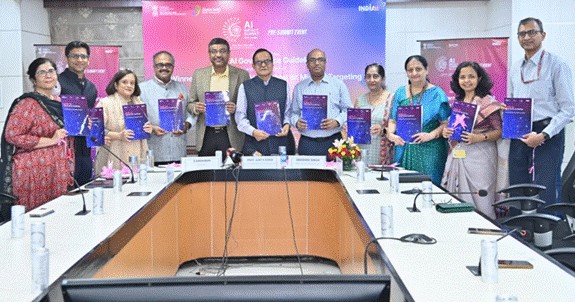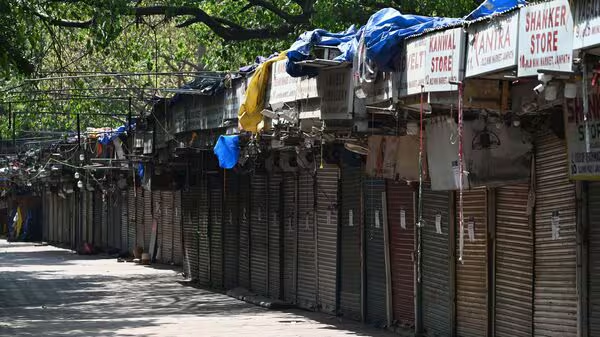The Urban Challenge Fund: Hype, Hurdles, and the Path Forward for India’s Cities

India’s cities are being tested against multiple milestones—the Sustainable Development Goals (SDGs) by 2030, Viksit Bharat by 2047, and the net- zero carbon target by 2070.
Like students facing the pressure of major exams, India’s cities are being tested against multiple milestones—the Sustainable Development Goals (SDGs) by 2030, Viksit Bharat by 2047, and the net-zero carbon target by 2070. Yet, as these deadlines approach, the fiscal foundations of Urban Local Bodies (ULBs) remain fragile, with own-source revenues contributing barely 1% of national GDP, far below what is needed to meet the scale of urban challenges. To meet this challenge, the Government of India announced in the Union Budget 2025–26 the Urban Challenge Fund (UCF) of ₹1 lakh crore, pitched as a game-changer to turn cities into growth hubs and economic powerhouses. For a country where urban capital expenditure has averaged barely 0.6% of GDP, this sounds like a booster shot long overdue.
Since its announcement and approval, states and cities have been awaiting the UCF’s guidelines like anxious students awaiting exam results. While the complete roadmap remains unclear, the Ministry of Housing and Urban Affairs (MoHUA) is pushing for financial readiness, particularly through credit ratings and innovative pooled instruments. One promising sign is the promotion of ‘Yellow Bonds,’ a new sub-category of green debt securities used to finance solar energy and climate-resilient infrastructure. These bonds offer a 5% additional incentive for pooled issuances, allowing smaller municipalities to come together and enjoy the benefits of municipal bonds.
However, the UCF is quickly becoming a buzzword, often portrayed as a one-stop cure for all urban ills—from traffic snarls and water scarcity to climate resilience. With guidelines still under development and key details shrouded in uncertainty, a crucial question remains: Is this really the panacea it’s made out to be, or is it just another ambitious scheme that risks getting stalled in bureaucratic red tape?
The UCF promises to take this further—funding up to 25% of “bankable projects” from the Centre, matched by an equal share from the State, while the remaining 50% is to be mobilised from capital
markets and public-private partnerships (PPPs). In theory, this could mean improved water, transportation, housing, and climate-resilient infrastructure. With 600 million Indians set to live in cities by 2036, driving 75% of GDP, the stakes couldn’t be higher.
A key requirement of the UCF is that states and cities must mobilise and service 50% of project costs from their own sources. In practice, this demands a strong credit rating, typically AA– or higher, which indicates stable and positive cash flows, robust internal revenues, and sound solvency ratios. Cities also need to have audited financial statements up to FY 2024–25 in place.
On paper, SEBI requires three years of audited financials for cities to issue bonds. In practice, most cities lag—meaning only a handful of states with strong local audit systems will qualify. This reality risks leaving only a handful of states with strong local audit systems qualified, deepening the divide between leaders and laggards. Unless audit reforms are fast-tracked, the promise of the UCF will remain a privilege for the few.
While glimpses of what’s possible exist—Pune’s ₹200 crore municipal bond for water supply in 2017 and Vadodara’s ₹100 crore green bond for wastewater management in 2024—these successes are rare. In the last six months, more than six bond issues of varying sizes have been issued, demonstrating how cities can tap into markets, yet also indicating preparedness to seize UCF-linked bond incentives despite the risks. Yet these successes remain exceptions, and they highlight three core challenges:
- Incomplete Guidelines and External Influence: Months after its announcement, guidelines remain incomplete. Reports suggest that multinational corporations and international agencies are heavily involved in shaping them, raising the question of whether the rules will reflect India’s diverse urban realities or import one-size-fits-all global models tilted toward metros, leaving Tier 2 and 3 cities behind.
- Weak City Capacity: The UCF demands “bankable projects,” but most ULBs lack the financial or technical capacity to prepare and manage them, as seen in past missions like the Smart City and AMRUT projects. Indian cities struggle to cope with “scarce ingredients,” with own-source revenues far below those of countries like Brazil or South Africa. Without stronger fiscal bases, even ambitious funds risk becoming inaccessible.
- Shallow Municipal Bond Market: Since 1997, fewer than 50 bonds have been issued, a drop in the ocean compared to the corporate bond market. Most cities continue to struggle with poor credit ratings, limited liquidity, and regulatory hurdles, which deter investors and hinder the growth of smaller towns.
Given this experience, the likelihood is high that the UCF will become accessible only to a narrow group of financially advanced states and cities. For many others, the hurdles will outweigh the hope and turning the fund into a feast that most cities can only watch from the sidelines. States like Gujarat, Tamil Nadu, Madhya Pradesh, Maharashtra, and Uttar Pradesh are already issuing bonds to secure a foothold, aware that competition will be fierce. Their strategy is clear: capture the first-mover advantage and claim a larger share of the ₹1 lakh crore UCF pie before others can catch up.
At the end of the day, this isn’t about bonds or yields; for citizens, it’s about whether the tap runs, the streetlights work, and waste is cleared. For the fund to succeed, a clear roadmap is needed, with a focus on:
- Realistic Conditionalities: Guidelines must be framed on achievable terms, ensuring grants reach smaller nagar panchayats and towns, not just metros.
- Financial Readiness: Assessment should be based on a city’s financial readiness, including credit ratings and clear roadmaps for financial closure.
- Financial Discipline and Reporting: ULBs’ discipline should be judged through a Financial Reporting Quality Index, incorporating qualitative categories such as timeliness, transparency, and reliability.
- Credit Enhancement: Introduce credit guarantees and revenue protection mechanisms to make city-level projects more attractive to investors.
Past missions have added spice but never delivered a full meal—piecemeal projects without holistic impact. Moving forward requires a transition from incentives to comprehensive urban transformation. The UCF holds promise as a catalyst for urban revival, but it’s no silver bullet. It can feed India’s urban future—or serve another half-cooked dish. Cities need the recipe now. Let’s hope the Urban Challenge Fund truly challenges India’s urban system—not by favouring a select group of big cities, but by creating a financially viable environment for all. If designed well, the UCF could do for India’s cities what the 1991 reforms did for the national economy—unlocking a new era of urban growth.

Authored by Mr. Hitesh Vaidya in coordination with Mr Pankajj Goel (Chartered Accountant: FCA), Team Leader, the World Bank-supported project for Revenue Augmentation, Jharkhand.








